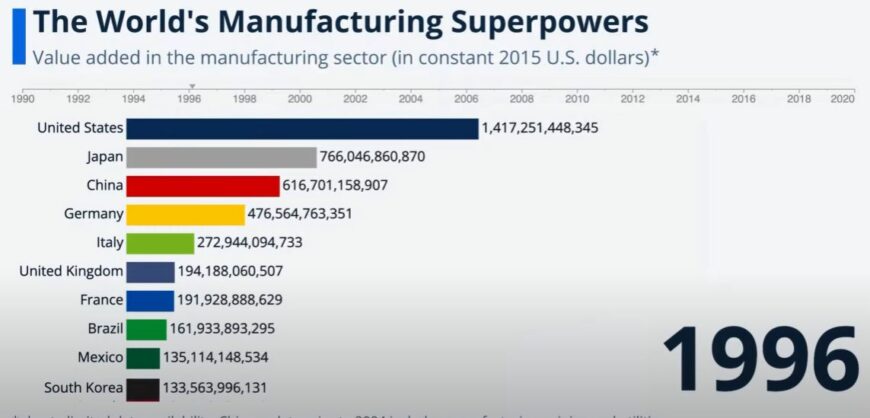While China’s status as the world’s largest manufacturing hub seems to be a given these days, that hasn’t always been the case. In fact, as recently as 2009, the U.S. trumped China in manufacturing output as measured by total value added in the sector.
As our latest racing bar video shows, China’s manufacturing output (measured in constant 2015 dollars) climbed from roughly $200 billion in 1990 to more than $4 trillion thirty years later. During that time, China’s share of global manufacturing output climbed from 3 percent to more than 30 percent, while former manufacturing leader the United States saw its share drop from 23 to 17 percent. In 2000, the U.S. share of global manufacturing had been even higher at 26 percent, but China’s accession to the WTO in 2001, which opened the country up to the world economy, quickly changed the balance of power.
China’s current status as “the world’s factory” is one of the reasons why the economic fallout of the ongoing Covid-19 pandemic was felt around the world, and still is. Many of the world’s largest consumer brands are relying on Chinese manufacturing and are still grappling with supply constraints caused by lockdowns and factory closures across the country.




































